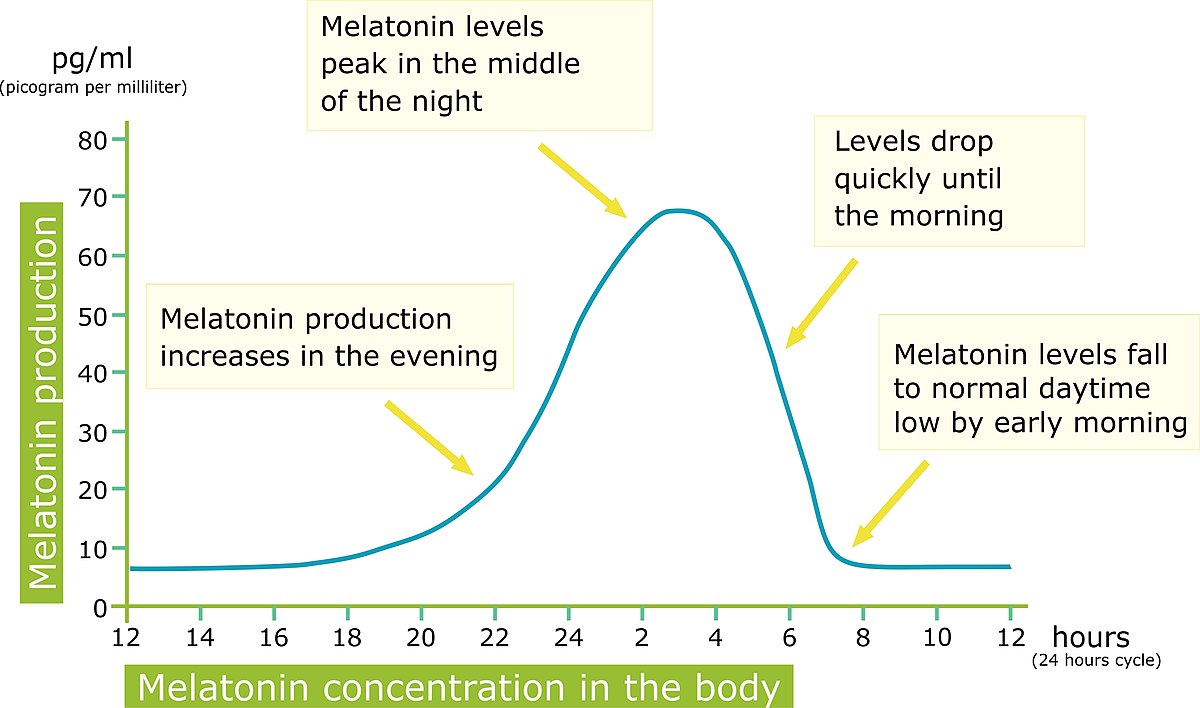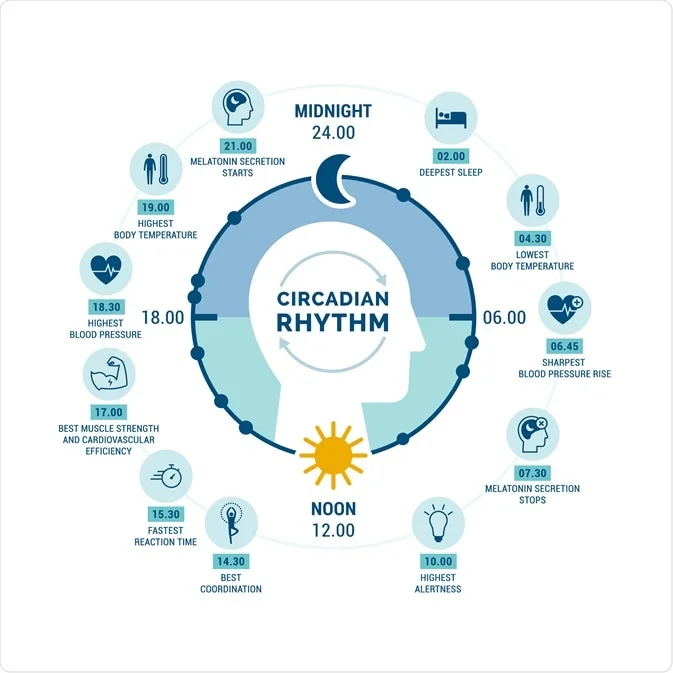Natural light is intimately linked to the functioning of our body, hence its essential role in our health. Scientists continue to explore its multiple contributions. Here is a selection of discoveries that prove the importance of natural light for health. Biological clock, circadian cycle, vitamin D… after reading this article, you’ll know everything about the subject!
The importance of natural light for health, an awareness renewed by recent discoveries
The day-night cycle of natural light may seem trivial. I used to think that it was only a visual observation: I see that it is daytime… I see that it is nighttime… Recent discoveries show that it goes far beyond that. Several phenomena are at work in our organism in reaction to the stimuli of natural light according to its daily and seasonal evolutions.
In 1965, Julius Axelrod, an American biochemical researcher, discovered the chronobiological role of melatonin. This neurotransmitter is secreted by the pineal gland, located in the brain. Commonly called the sleep hormone, melatonin helps people fall asleep.

In the 90’s George Brainard, an American neurology researcher, demonstrated that blue light stops the secretion of melatonin. Mother Nature did the right thing because during the day the sky delivers a blue light that stimulates activity. The yellow-orange light of sunset and even more so the darkness at night trigger the secretion of melatonin, which is conducive to sleep.

Good exposure to natural light protects against sleep disorders
In 2002, David Berson, another American neurology researcher, discovered previously unknown photoreceptors in the retina. Each eye has 2000 photosensitive cells distinct from those of vision. They inform the brain about the presence of light and allow it to synchronize our activity with the day-night cycle.
The photosensitive cells of the eye thus contribute to adjusting our activity and sleep cycle. Although this phenomenon is unconscious, the quality of our sleep depends directly on it.
Sleep disorders affect a significant portion of the population. It is estimated that 20% of adults suffer from insomnia. The blue light emitted by our screens is undoubtedly a major factor. This shows the importance of natural light for health. Its changes in color and intensity bring essential benefits for our sleep. It influences our capacities and our mood: tonus, attention, concentration, irritability…

Why is daylight-based bioreferencing so important?
In 1962 the geologist Michel Siffre stayed 2 months isolated in the Scarasson chasm, in Italy. He wishes to observe the rocks and the glacier in depth. Unable to go up and down every day, he chose to camp in the underground. In the absence of any external contact, he discovers a posteriori that his days remained on a 24-hour rhythm. He thus demonstrates the existence of the biological clock.
However, in the absence of natural regulation, his rhythm of life gradually shifts. As this chronobiology experiment illustrates, natural light sets the biological clock on time.
Plunged into darkness, Michel Siffre does not perceive the alternation of day and night. He gets up and goes to bed spontaneously, without a clock. He has an artificial lamp that he can turn on at his own initiative to read, write and make his geological observations. With the help of a walkie-talkie, he informs his research team which records all his activities.
The analysis of the results is rich in information on the importance of natural light for health. Without daylight, his energy level drops sharply. He loses his memory and repeats several times actions that he has already performed, which he immediately forgets. Exposure to natural light is crucial for our morale, concentration, attention and our ability to memorize.

Natural light is at the heart of the circadian cycle
The waking day is only part of the cycle we go through every day. Activity, appetite, digestion, fatigue, rest, sleep follow each other in 24-hour periods. This is the circadian cycle.

Natural light plays a decisive role in the development of the circadian cycle. It triggers several step changes and ensures its regular synchronization. Exposure to natural light influences our mood, our appetite and our sleep. In a direct or indirect way, all the stages of the circadian cycle are linked to natural light.
Faced with this fact, it is paradoxical to observe that we spend most of our days indoors. Access to natural light in buildings is by definition limited. It depends on the quality of their architectural design. The importance of natural light for health is reflected in the importance of natural lighting in the buildings we occupy.

The skin is also a photoreceptor particularly sensitive to natural light
In 1958 Aaron Bunsen Lerner, an American dermatology researcher, discovered melatonin. This fortuitous discovery during his research on skin pigmentation was not immediately exploited. In the mid-1960s, the study of the central nervous system highlighted the role of neurotransmitters. Among the best known, melatonin is the sleep hormone. It goes hand in hand with serotonin, the happiness hormone.
At the skin level, the importance of light for health was discovered very early. As early as antiquity, Herodotus understood the influence of exposure to daylight on bone structure. After the battles between the Greeks and Egyptians, he collected skulls from the dead on both sides. He can compare them. The skulls of the Egyptians are more resistant than those of the Greeks. The Egyptians have a shaved head and are poorly dressed while the Greeks are hairy and dressed. Herodotus makes the link between the difference of exposure to the sun and its consequences on the resistance of the bones. It was not until two millennia later that the determining role of light on skin and bone health was elucidated.

Natural light provides energy for our internal vitamin D factory
In 1928, Adolf Windaus, a German chemist, discovered the synthesis of vitamin D by the sun. In the epidermis, vitamin D-producing cells become active when they receive ultraviolet rays of type B (UVB). The general public knows vitamin D as the sunshine vitamin.
Vitamin D plays a role in the absorption of calcium, of which the bones are made up. Its role is essential at any age and in particular in children to avoid rickets. Vitamin D could also be a factor of immunity against certain diseases.

Natural light is much richer and more beneficial than artificial light
In 1665, Father Francesco Maria Grimaldi, an Italian Jesuit, discovered the color spectrum of natural light. During an experiment, he projected light on a screen through the thin openings of a black box. On the screen, he observes the palette of colors of the rainbow.
Natural light contains all wavelengths from infrared to ultraviolet. It differs from artificial light, which delivers only a part of the light spectrum. For example, a standard light bulb creates a white light by adding only a few colors. The colorful richness of natural light contributes to our feeling of contact with nature. By definition the color rendering index (CRI) of natural light is 100, which is the maximum value.
Unlike artificial light sources, natural light is continuous. The rapid frequency of switching on and off of neon tubes and LEDs, even imperceptible, can cause fatigue and cardiac arrhythmia. The stability and continuity of wavelengths across the spectrum contribute to the importance of natural light on health.

Natural light is an inexhaustible source of benefits for humans
Natural light is the source of life on earth. The great mechanisms of nature such as plant photosynthesis and the water cycle are driven by its energy. It is not surprising that natural light also plays a key role in our health. The importance of natural light for health is scientifically established.





